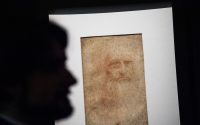2,700-Year-Old Guardian Deity Found in Iraq: ‘I’ve Never Unearthed Anything This Big’
A 2,700-year-old Assyrian lamassu—a protective deity sculpture—was recently re-excavated in Iraq, astounding experts with its size and condition.
The Iraqi State Board of Antiquities and Heritage (SBAH) announced yesterday that the figure, depicting a human head and a body akin to bull or lion with wings like a bird, had survived the two millennia with relatively limited damage. The alabaster sculpture weighs roughly 19 tons and measures around 12 and a half feet long.
The re-excavation was conducted by a joint Iraqi-French team led by Ahmed Fakak Al-Badrani. The French archaeologist Pascal Butterlin—the professor of Middle East archaeology at the University of Paris I Pantheon-Sorbonne—told France24: “I’ve never unearthed anything this big in my life before…Normally, it’s only in Egypt or Cambodia that you find pieces this big.”
According to the SBAH release, the lamassu was commissioned by Assyrian King Sargon II to guard the new capital of Khursbad after he gained power in 721 BCE. The death of Sargon II’s son, however, prompted the capital to move, leaving the lamassu behind.
It was first uncovered in 1992 during an Iraqi-led excavation. However, Iraq had recently been placed under a devastating economic embargo in retribution for Saddam Hussein’s invasion of Kuwait. This consequently destabilized systems designed to protect cultural heritage from Iraq, fueling a spike in antiquities thefts.
In 1995, the head of the statue was sawed off by looters, who had attempted to smuggle it out of the country in 11 parts. The head was eventually recovered and reassembled, though cracks from the ordeal are visible. The head was placed in the Iraqi Museum in Baghdad, while the body was reburied for its protection.
SBAH director Laith Hussein told the Art Newspaper that the archaeological team is pursuing strategies to reunite the head with its body.



